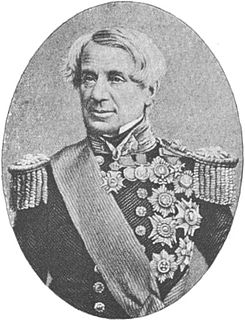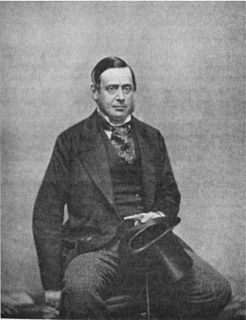
Earl of Longford is a title that has been created twice in the Peerage of Ireland.

Viscount Hood, of Whitley in the County of Warwick, is a title in the Peerage of Great Britain. It was created in 1796 for the famous naval commander Admiral Samuel Hood, 1st Baron Hood. He had already been created a Baronet, of Catherington, in the Baronetage of Great Britain on 20 May 1778, and Baron Hood, of Catherington in the County of Southampton, in the Peerage of Ireland in 1782.

Earl of Limerick is a title that has been created twice in the Peerage of Ireland, associated first with the Dongan family, then with the Pery family.

Earl of Lonsdale is a title that has been created twice in British history, firstly in the Peerage of Great Britain in 1784, and then in the Peerage of the United Kingdom in 1807, both times for members of the Lowther family.

Earl of Clanwilliam is a title in the Peerage of Ireland. It was created in 1776 for John Meade, 1st Viscount Clanwilliam. The Meade family descends from Sir John Meade, who represented Dublin University and County Tipperary in the Irish House of Commons and served as Attorney-General to James, Duke of York. In 1703, he was created a Baronet, of Ballintubber in the County of Cork, in the Baronetage of Ireland. His eldest son, Pierce, the second Baronet, died unmarried at an early age and was succeeded by his younger brother Richard, the third Baronet. Richard represented Kinsale in the Irish Parliament.

Earl Granville is a title that has been created twice, once in the Peerage of Great Britain and once in the Peerage of the United Kingdom. It is now held by members of the Leveson-Gower family.

Earl of Lytton, in the County of Derby, is a title in the Peerage of the United Kingdom. It was created in 1880 for the diplomat and poet Robert Bulwer-Lytton, 2nd Baron Lytton. He was Viceroy of India from 1876 to 1880 and British Ambassador to France from 1887 to 1891. He was made Viscount Knebworth, of Knebworth in the County of Hertford, at the same time he was given the earldom, also in the Peerage of the United Kingdom.

Viscount Hardinge, of Lahore and of Kings Newton in the County of Derby, is a title in the Peerage of the United Kingdom. It was created in 1846 for the soldier and Tory politician Sir Henry Hardinge. His son, the second Viscount, represented Downpatrick in Parliament. His great-great-grandson, the sixth Viscount, succeeded a distant relative as eighth Baronet, of Belle Isle in the County of Fermanagh, in 1986. This title had been created in the Baronetage of the United Kingdom 1801 for Richard Hardinge. He was the third son of Nicolas Hardinge, younger brother of Reverend Henry Hardinge and uncle of the latter's third son Henry Hardinge, 1st Viscount Hardinge. The baronetcy was created with special remainder to the heirs male of Richard Hardinge's father.

Viscount De L'Isle, of Penshurst in the County of Kent, is a title in the Peerage of the United Kingdom. It was created in 1956 for William Sidney, 6th Baron de L'Isle and Dudley, VC, KG, GCMG, GCVO (1909–1991).
Baron Derwent, of Hackness in the North Riding of the County of York, is a title in the Peerage of the United Kingdom. It was created on 10 October 1881 for the former Liberal Member of Parliament for Scarborough, Sir Harcourt Vanden-Bempde-Johnstone, 3rd Baronet. His grandson, the third Baron, was an author, poet and minor diplomat. On his death in 1949 the titles passed to his younger brother, the fourth Baron. He served in the Conservative administrations of Harold Macmillan and Sir Alec Douglas-Home as Minister of State for Trade and Minister of State for Home Affairs. As of 2010 the titles are held by his son, the fifth Baron, who succeeded in 1986.
Baron Swaythling, of Swaythling in the County of Southampton, is a title in the Peerage of the United Kingdom. It was created in 1907 for the British Jewish Liberal politician, banker and philanthropist, Sir Samuel Montagu, 1st Baronet. He had already been created a Baronet, of South Stoneham House in the County of Southampton and of Kensington Palace Gardens in the County of London, in 1894. As of 2010, the titles are held by his great-great-grandson, the fifth Baron, who succeeded his father in 1998.

Baron Croft, of Bournemouth in the County of Southampton, is a title in the Peerage of the United Kingdom. It was created on 28 May 1940 for the Conservative politician Sir Henry Page Croft, 1st Baronet. He had already been created a baronet of Knole in the Borough of Bournemouth in the County of Southampton in the Baronetage of the United Kingdom on 28 February 1924. Croft was the grandson of Reverend Richard Croft, third son of Dr. Sir Richard Croft, 6th Baronet, of Croft Castle. As of 2010 the titles are held by the first Baron's grandson, the third Baron, who succeeded his father in 1997.

The title of Earl of Kenmare was created in the Peerage of Ireland in 1801. It became extinct upon the death of the 7th Earl in 1952.

Admiral Edmund Lyons, 1st Baron Lyons, was an eminent British Admiral of the Royal Navy, and an eminent British diplomat, who was responsible for encouraging the Crimean War, during which he was Commander-in-Chief of the Mediterranean Fleet, and for the securing the subsequent allied victory in the conflict, through his efforts at the Siege of Sevastopol (1854–1855) with both the Navy and the British Army.
Captain John Lyons, was a British owner of extensive sugar plantations, of 563 acres in total, in Antigua, where he served as a politician and a Captain in the Royal Navy.

Richard Bickerton Pemell Lyons, 1st Earl Lyons was an eminent British diplomat, the favourite of Queen Victoria. Lyons was the most influential British diplomat during each of the four great crises of the second half of the 19th century: Italian unification; the American Civil War; the Eastern Question; and the replacement of France by Germany as the dominant Continental power subsequent to German Unification. Lyons is best known for solving the Trent Affair during the American Civil War; for laying the foundations for the Special Relationship and the Entente Cordiale; and for predicting, 32 years before World War I, the occurrence of an imperial war between France and Germany that would destroy Britain's international dominance.

Hon. Anne Theresa Bickerton Lyons was born in 1815 to Edmund Lyons and Augusta Louisa. In Athens, Greece on 24 December 1839, she married Philipp Hartmann Veit von Würtzburg (1811–1897), Baron von Würtzburg, in Bavaria.

The Portal baronetcy, of Malshanger, Church Oakley, in the County of Southampton, is a title in the Baronetage of the United Kingdom. It was created on 18 April 1901 for Wyndham Portal, Chairman of the London and South Western Railway Company. His son, the second Baronet, became chairman of the family's banknote paper mill company in Laverstoke, Portals Limited, which had manufactured banknote paper for the Bank of England since 1724, and deputy chairman of the London and South Western Railway Company. He was succeeded by his son, the third Baronet. He was also chairman of Portals Ltd, and served as Minister of Works during the Second World War. He was created Baron Portal, of Laverstoke in the County of Southampton, in 1935, and Viscount Portal, of Laverstoke in the County of Southampton, in 1945. Both titles were in the Peerage of the United Kingdom. Lord Portal was childless and on his death the peerages became extinct. However, he was succeeded in the baronetcy by his 84-year-old uncle, the fourth Baronet. He was President of the Trustee Savings Banks Association. On his death the title passed to his son, the fifth Baronet. He was chairman and director of Portals Ltd. As of 2010 the title is held by his son, the sixth Baronet, who succeeded in 1984.

The Lyttelton family is a British aristocratic family. Over time, several members of the Lyttelton family were made knights, baronets and peers. Hereditary titles held by the Lyttelton family include the viscountcies of Cobham and Chandos, as well as the Lyttelton barony and Lyttelton baronetcy. Several other members of the family have also risen to prominence, particularly in the field of cricket.











